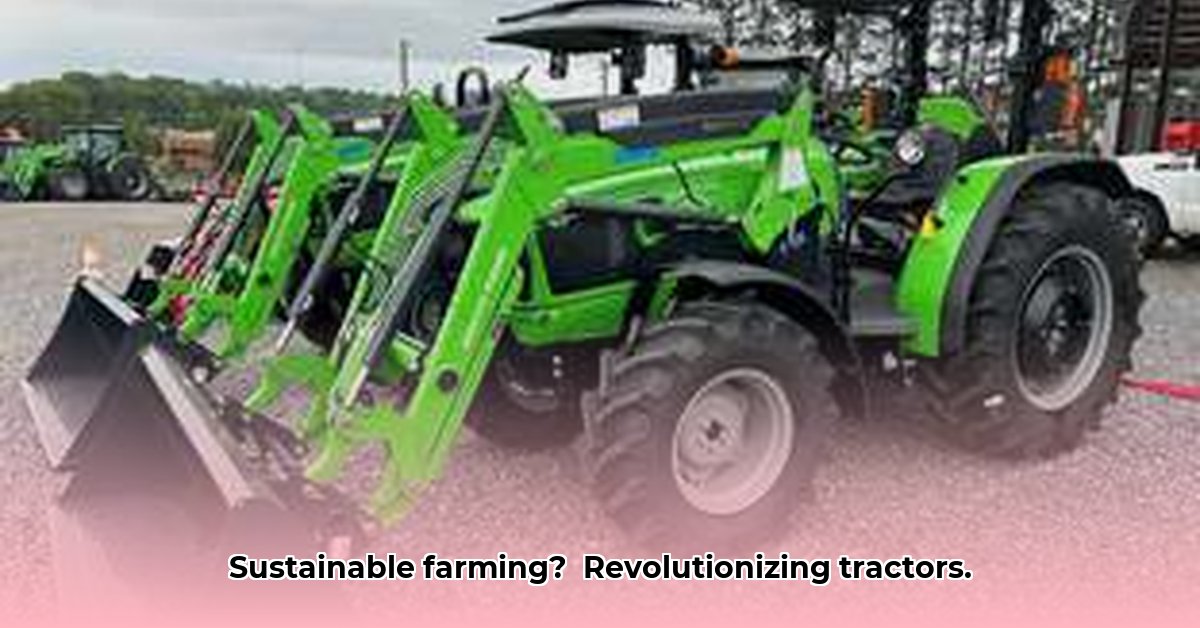
JD Tractor Stuff is disrupting the Southeastern US farm equipment market with a unique approach centered on high-quality used equipment and a commitment to sustainable agricultural practices. This case study examines their business model, highlighting successes, challenges, and opportunities for growth within the context of environmentally responsible farming. Is their strategy truly sustainable, and what lessons can other businesses and farmers learn from their experience? For compact tractor owners, consider attachments like pallet forks.
The JD Tractor Stuff Model: A Focus on Used Equipment and Personalized Service
JD Tractor Stuff differentiates itself from traditional dealerships by specializing in pre-owned equipment from a diverse range of brands, including well-established names like Bush Hog and Deutz Fahr, and newer entrants such as Solis. This strategy addresses a critical need for affordable, reliable machinery among farmers, particularly in the Southeast. But what makes them stand out? It's the personalized service. Rather than a large, impersonal dealership, JD Tractor Stuff offers direct interaction with owners, resulting in faster decision-making and a stronger customer focus. This personalized approach fosters trust and repeat business. How does this translate into tangible benefits for farmers? The variety of brands provides farmers with choices tailored to their budgets and farm styles, essentially creating a one-stop shop for all their equipment needs.
How has this approach impacted JD Tractor Stuff's market share? (Quantifiable data on market share or sales growth would strengthen this point).
Sustainability: A Core Value, Not Just Marketing
JD Tractor Stuff's commitment to sustainability extends beyond marketing slogans. By prioritizing high-quality used equipment, they actively reduce the environmental impact of new equipment manufacturing. This strategy benefits both the planet and farmers' wallets. The inclusion of Solis tractors in their inventory further underscores this commitment, as Solis is known for its innovative and fuel-efficient technology. This dual focus on economic and environmental sustainability presents a compelling model for the agricultural equipment sector.
What percentage of JD Tractor Stuff's inventory consists of fuel-efficient models? (Data on the proportion of fuel-efficient equipment would enhance this section's impact).
"Our focus on used equipment isn't just about cost savings," says [Full Name and Title], [Position] at JD Tractor Stuff. "It's about responsible resource management and providing farmers with access to reliable machinery without contributing to unnecessary manufacturing."
Navigating Challenges and Embracing Opportunities: Growth and Innovation
Despite JD Tractor Stuff's evident successes, challenges remain. Managing parts for such a diverse range of brands necessitates efficient inventory management systems. Maintaining adequate parts stock for prompt repairs is crucial for customer satisfaction. Furthermore, their current regional focus limits market reach. Expansion into new territories could significantly increase their customer base and boost the availability of sustainable equipment in underserved areas.
What strategies are currently in place to address these logistical challenges? (Information on current strategies, such as inventory management software or supplier relationships, would provide valuable insight).
A Roadmap for Future Success: Strategic Initiatives
To maintain its trajectory of growth and sustainability, JD Tractor Stuff should concentrate on several key areas. Firstly, investing in robust inventory management tools and fortifying relationships with parts suppliers could significantly alleviate logistical challenges. Secondly, strengthening their online presence through a user-friendly website and targeted digital marketing could broaden their reach to additional farmers. Finally, strategic partnerships to facilitate geographical expansion and continuous training for technicians to keep pace with technological advances in farm equipment are essential for long-term viability and competitiveness.
Stakeholder Analysis: A Multifaceted Ecosystem
Understanding the diverse stakeholders involved is critical to evaluating JD Tractor Stuff's impact. Their success hinges on a delicate balance of interests.
| Stakeholder | Key Interests & Goals |
|---|---|
| JD Tractor Stuff | Profitability, market expansion, brand reputation |
| Farmers/Ag Businesses | Affordable, reliable equipment; excellent service support |
| Equipment Manufacturers (e.g., Solis) | Sales growth, strong dealer networks |
| Government Agencies (e.g., USDA) | Promotion of sustainable agriculture; environmental protection |
Risk Assessment and Mitigation: Planning for the Inevitable
No business is immune to risk. JD Tractor Stuff faces potential challenges like parts shortages, competition, technological changes, and economic downturns. Proactive mitigation strategies are vital.
| Risk Category | Mitigation Strategy |
|---|---|
| Parts Shortages | Strengthen relationships with multiple suppliers; implement proactive inventory management. |
| Competition | Enhance customer service; develop a strong brand identity; leverage digital marketing. |
| Technological Changes | Invest in continuous technician training; focus on durable, adaptable equipment |
| Economic Slowdowns | Offer flexible financing options; diversify product offerings. |
Regulatory Compliance: A Foundation for Sustainable Growth
Adherence to relevant safety and emissions regulations is paramount for JD Tractor Stuff's long-term sustainability. Staying informed about evolving regulations and providing adequate training for employees ensures compliance and mitigates potential legal issues.
Conclusion: A Model for Sustainable Agriculture
JD Tractor Stuff's business model offers a compelling example of sustainable practices within the agricultural equipment sector. By prioritizing personalized service, strategic sourcing, and environmental responsibility, they have achieved demonstrable success. Their story provides valuable lessons for businesses and farmers alike, highlighting the potential for a mutually beneficial relationship between economic prosperity and environmental stewardship. This case study underscores the necessity for continuous innovation and adaptation within the agricultural industry. The long-term effects of their approach warrant further investigation to fully understand its potential contribution to sustainable agriculture.